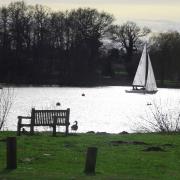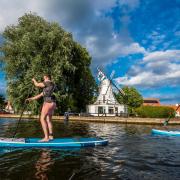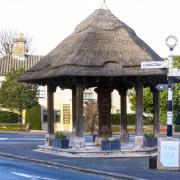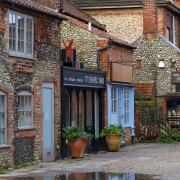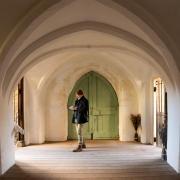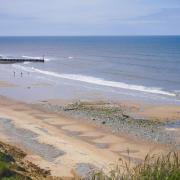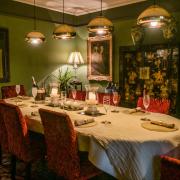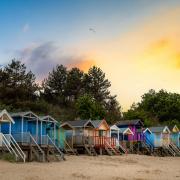A Norfolk village that is famous for its wool heritage
WOOLLY WORSTEAD
The wool and weaving industry brought huge wealth to the Worstead from the 12th century and the high-quality smooth woollen cloth, worsted, was named for the village.
Some of the handsome houses around the village were originally built for weaving – with large windows to maximise natural light, high ceilings to accommodate 12ft-tall looms and cellars to store the wool at a cool temperature.
The very oldest Act of Parliament in the archives of the House of Lords in Westminster is the Taking of Apprentices for Worsteds in the County of Norfolk Act, of 1497.
Fifty years ago the Worstead Guild of Weavers, Spinners and Dyers was launched to inspire local people to spin, weave and dye and ensure that the village’s long tradition of creating cloth would continue.
Now based in nearby Dilham, its members share looms, spinning wheels and a huge amount of expertise, leading demonstrations and workshops at local events, and meeting every Tuesday, Wednesday and Saturday.
VIKINGS
The Vikings were here – revealed by the names of the hamlets Bengate, Briggate, Lyngate and Withergate surrounding Worstead. Gate means street in the old Norse language of the Vikings – with Bengate a street through a bean field, Holgate a street through a hollow, Lyngate a street though flax or lime trees, and Withergate a street through willows. Worstead itself was given to St Benet’s Abbey by Canute, king of England, Norway and Denmark – but not of holding back the tides.
SPIRITS AND SPIRITUAL
Magnificient St Mary’s church was funded by the medieval wool industry and its screen, glowing with painted saints, is among the best in East Anglia. Look out for St Uncumber, a princess who avoided an arranged marriage by praying for, and growing, a beard. It was believed women making an offering to her image for a year and a day would be unencumbered of their husband.
The village pub, the White Lady, changed its name from the New Inn in honour of a ghost who is said to appear in the church at midnight on Christmas Eve. And on stormy nights beware the ghost of Sir Berney Brograve, the first baronet of Worstead, who died in 1797. Stories of dissolution, drunkenness, fear and misfortune swirled around him in life and clung to his name like mud from his flooded marshes, long after his death.
Cursed drink, grief, fear and ill-fortune, he is said to have wagered his soul that he could out-mow the devil over two acres of bean plants at Worstead. After cheating by spiking the devil’s acres with iron rods, some say he is still fleeing, on a flame-snorting horse, hotly pursued by the devil.
WALKS
A heritage trail reveals some of the more evidence-based history of Worstead. Another includes nearby Meeting House Hill, where a Baptist congregation took over the hamlet 200 years ago, building almshouses, a chapel, school, almshouses, stables for 40 horses for families travelling to its packed Sunday services, a headteacher’s house and a row of weavers’ cottages – including one for the minister who was also a weaver. Worstead Baptist Church is still based here. The 61-mile Weavers Way trail between Cromer and Great Yarmouth also passes Meeting House Hill, with a linked circular walk into Worstead. Find the Worstead Heritage trails via the Worstead Parish Council website.
WORSTEAD FESTIVAL
The renowned village festival returns on July 29-30. For almost 60 years it has brought fun for all the family and raised money for local good causes.
On the festival field see horse, dog and circus displays, a marquee packed with local crafts, a farmers’ market, cooking demonstrations, live music, a petting farm, archery and a climbing wall. There is also a café, art exhibition and Lego display at the village hall, and a flower festival in the church. Plus tractor and trailer rides to and from Worstead railway station and the festival car parks.






